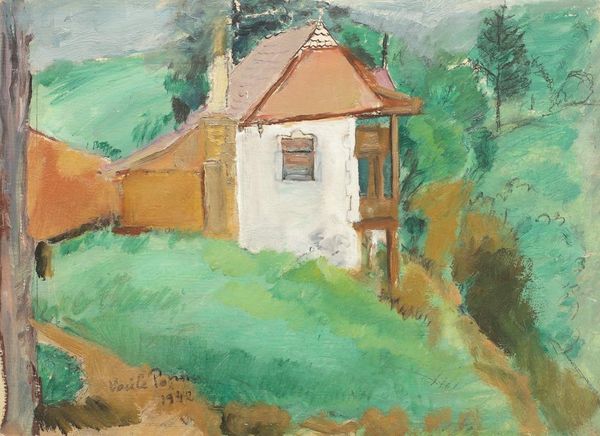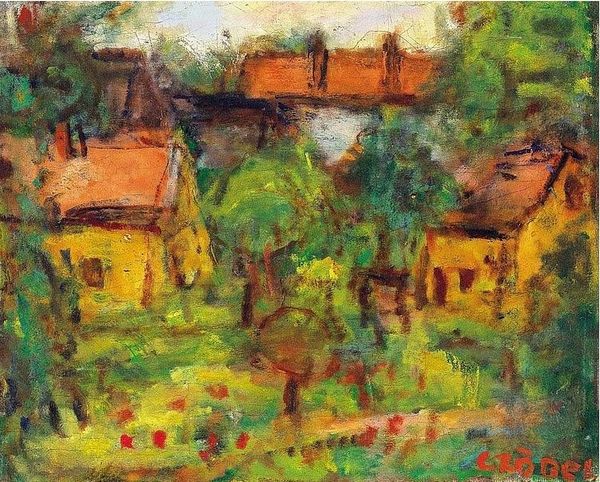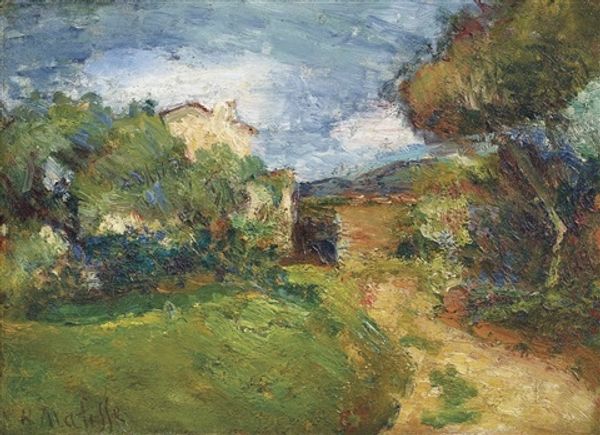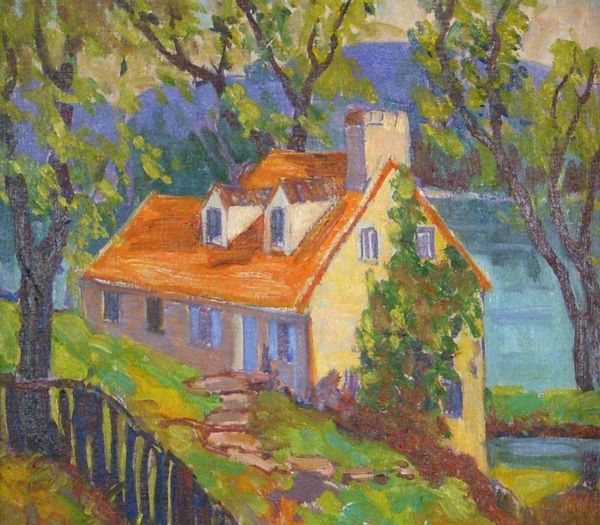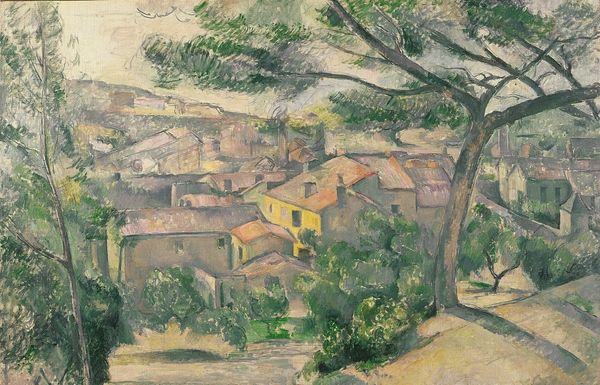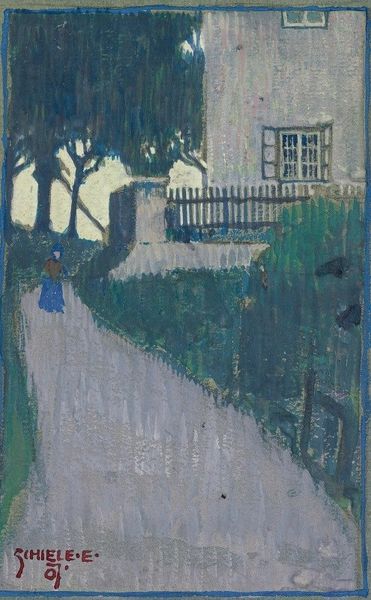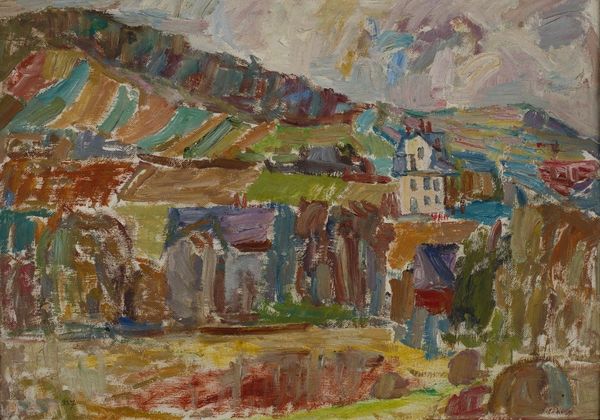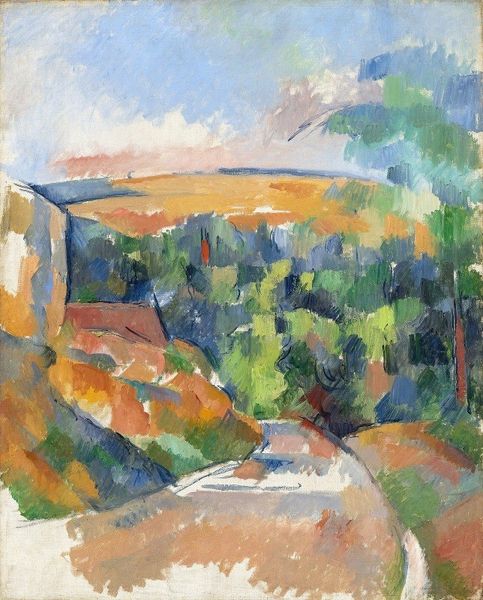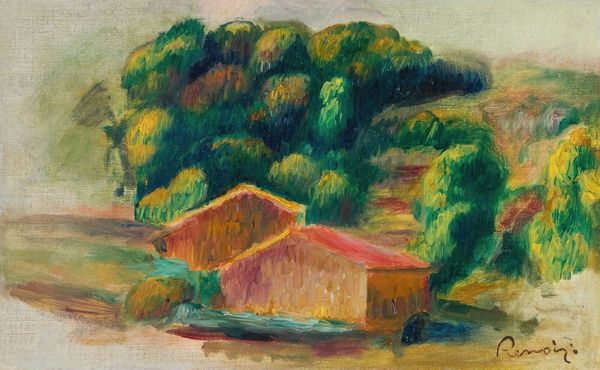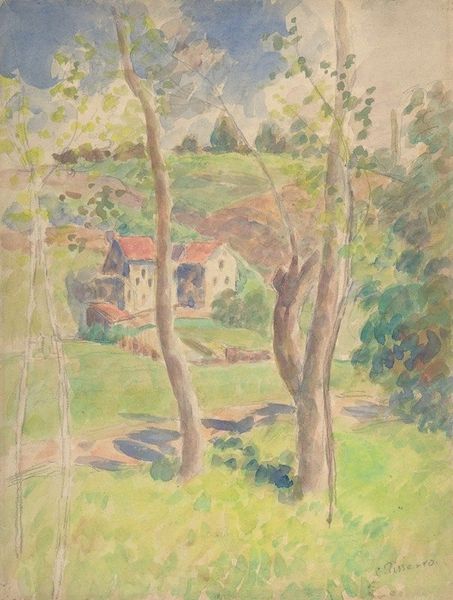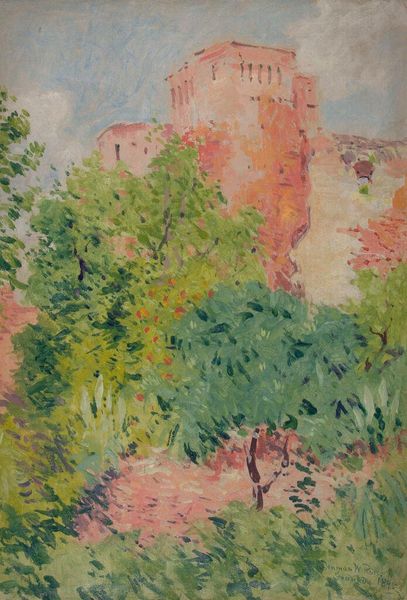
Copyright: Public Domain: Artvee
Curator: Édouard Vuillard’s “Villa at Saint-Jacut," painted around 1909, offers us a peek into the artist's intimate world, a frequent theme in his work that connected deeply to his immediate social and familial relationships. What's your initial response? Editor: The composition really grabs me. The chalky, almost muted palette, and the way the form seems to emerge organically from the material – the villa itself looking as though it's built of watercolor itself. Curator: It’s fascinating how Vuillard used such an everyday scene – a simple villa – to explore the intersection of domesticity, class, and artistic identity. We must understand that for Vuillard, domestic space, often feminized, was the center for much social labor. How is the artist himself positioned in this social landscape, I wonder? Editor: I am drawn to consider that from a materialist perspective. I mean, look closely – the strokes! The quickness of the watercolor betrays the economic and societal privileges that made such art possible. It also speaks to the Impressionist pursuit of capturing fleeting moments and sensations, as if the building were ephemeral. Curator: Absolutely! The haziness emphasizes the ephemeral nature of domestic life. Vuillard's positioning of the scene suggests that his work invites us to examine societal attitudes toward gender and social hierarchy. It is a call for a society structured around care, understanding, and respect for each other’s agency. Editor: Well, let's think more precisely about the 'what' of 'care'. How Vuillard depicts that scene-- those pale yellows--required, not only skill, but specific resources to create that. From a materialist point of view, labor practices matter too in that villa's actual, real world! Curator: Your emphasis on materiality and context challenges viewers to examine these complex social issues embedded in the art, bridging historical representation with contemporary ethical concerns. Editor: I'd like to believe it offers avenues for material-centered conversations about labor, context, production. Curator: It truly showcases the capacity of art to challenge established power dynamics and provide opportunities for collective empathy. Editor: Right, and that’s enabled because we have physical traces on paper of artistic practice in relation to specific labor situations of the era!
Comments
No comments
Be the first to comment and join the conversation on the ultimate creative platform.
